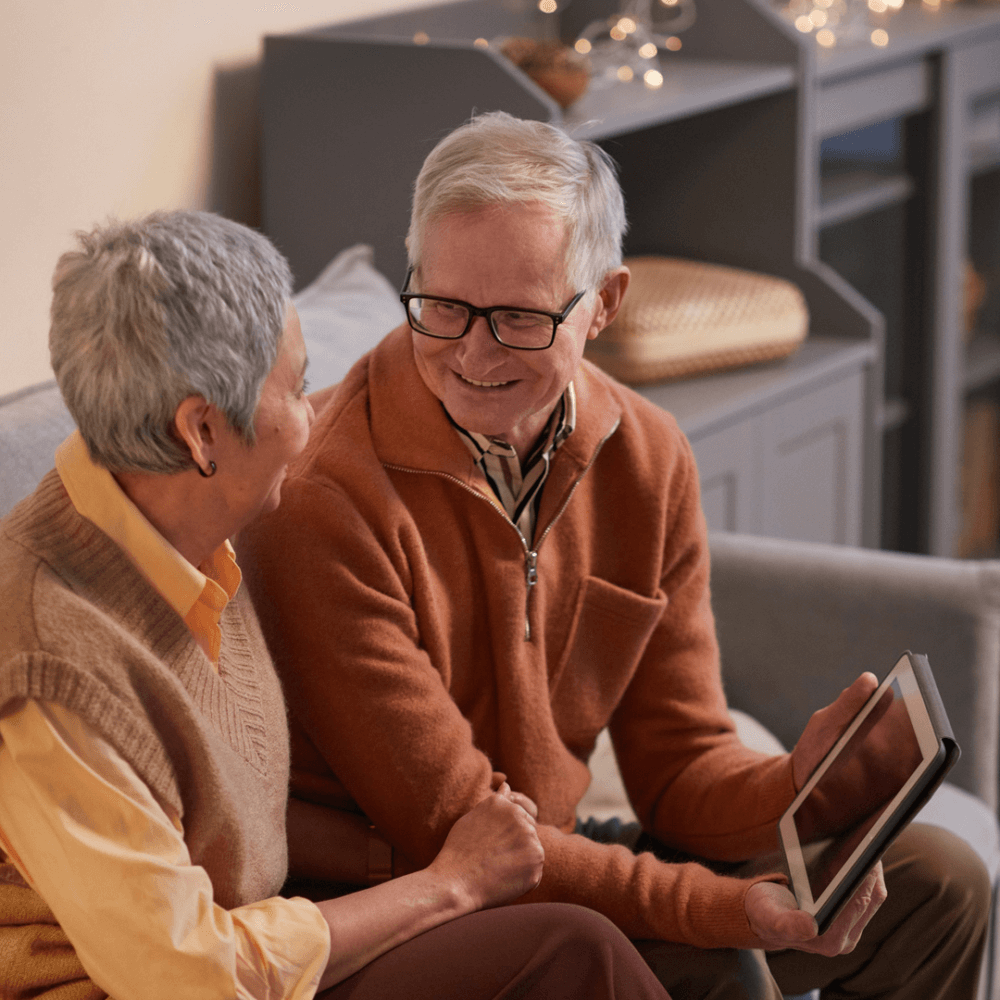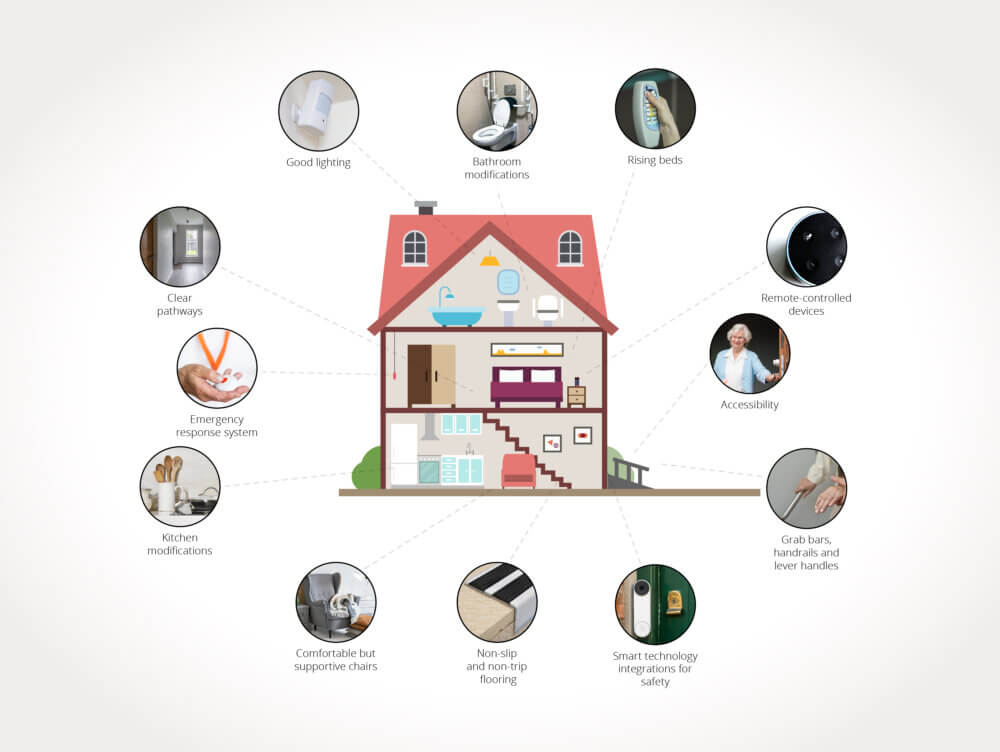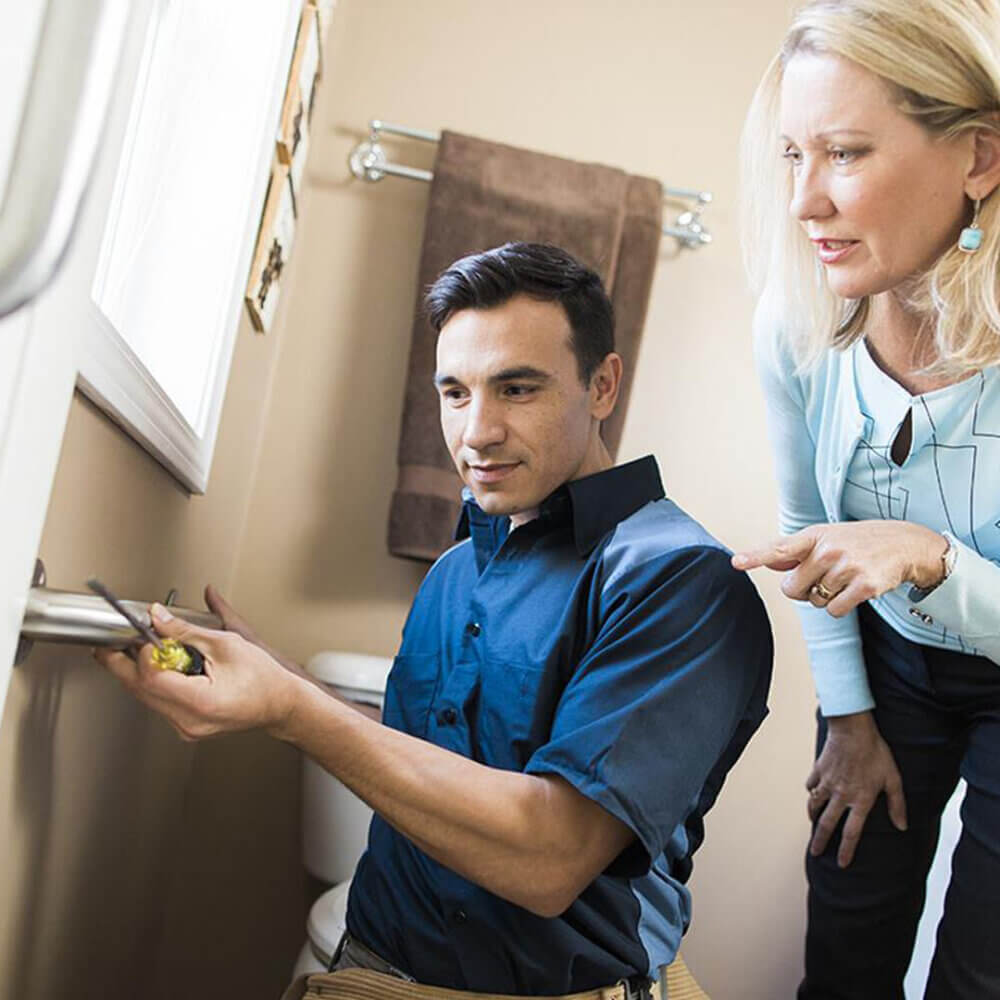Tips for a Senior-Friendly Home in Watford
Support your loved ones and maintain their independence. Our guide offers a checklist to create a safe and accessible home environment, with links to Watford-based resources.

Twelve quick tips for a senior-friendly home
Whether you are adapting your home now or planning for your parents’ future, here are twelve senior-friendly considerations we always advise our clients about.

1. Accessibility:
One of the first things you’ll spot as your parents age is their decreased mobility, which can feel frustrating for them. The first step in transitioning from a bustling home to an adaptable senior home is considering accessibility. Ensure essential areas like the bedroom, bathroom, and kitchen are easy to get to, and consider installing ramps or lifts if there are stairs.
2. Clear pathways:
When considering accessibility, it’s also essential to consider pathways from room to room or one side of the room to the other. Remove any clutter or obstacles, especially for anyone using mobility aids like walkers or wheelchairs. For parents with vision difficulties, consider contrast-coloured taps at the edges of cabinets to guide them through space safely.
3. Non-slip and non-trip flooring:
We’ve all had moments where we’ve caught the corner of a rug and gone flying or slipped on a wet bathroom floor. We get up and shrug it off. As we get older, getting up and shrugging things off is more challenging; some falls can be pretty serious. Think about how you can update rooms to reduce the risk of falls and concentrate on areas like kitchens and bathrooms where there could be more hidden hazards. It doesn’t always mean striping back to minimalist decor. Instead, Mum’s favourite rug could have some non-slip tape applied to keep it in situ.
4. Grab bars, handrails and lever handles:
Mum and Dad might need more support moving about, and installing sturdy grab bars and handrails in critical areas can help. The most prominent areas to consider here are coming from outside into the home, the bathroom and the stairs – but do consider how they use spaces; for example, a keen gardener might also need a grab rail inside the back door to hold on to as they take off their boots. Lever handles are also helpful as replacements to traditional door knobs and tap fittings, as they are both easy and comfortable to use.
5. Good lighting:
As we age, we are more likely to have vision problems. Ensure that all home areas are well-lit to prevent accidents, and consider motion-activated lights in the bedroom and bathroom for night time convenience. Also, consider outside spaces, particularly doorways and paths, as this helps during low-light evenings or night time use.
6. Bathroom modifications:
We’d all like a designer walk-in shower, but as we get older, that desire becomes more of a need, as climbing into a bath becomes challenging. Consider an easy walk-in option with a built-in seat, a non-slip bath mat and easy-to-use long-handled sponges. You can also pick up non-slip floor mats for outside the cubicle and wipe down seats for ease of getting dried. Don’t forget the mirrors and toilet seats; heights can be adjusted so Mum and Dad aren’t stretching or moving more than needed.
7. Kitchen modifications:
The kitchen is easily one of the most used rooms in the house, so making life easier here keeps Mum and Dad interested in cooking for longer. Consider a perching chair, kettle tipper and better tools for each food prep job and remember easy-to-empty bins. Also, think about seemingly little things, like handles on pans, cutlery and tin openers – can your parents grip what they need to use safely?
8. Comfortable but supportive chairs:
A good chair means a comfortable day. Choose easy furniture to get in and out of, with firm back cushions for support, and ensure enough space to manoeuvre around furniture. Powered mobility recliner chairs are always an excellent option for those needing extra leg and hip support.
9. Rising beds:
Electric adjustable beds are an excellent option for getting in and out of bed and can provide much-needed support for those who are drowsy from medication or a bad night’s sleep. Couple this with a supportive bedroom chair, and getting dressed in the morning is more manageable.
10. Remote-controlled devices:
Consider remote-controlled or voice-activated devices for lights, thermostats, and other home systems to make it easier for Mum and Dad to manage their environment. This can be especially useful if they aren’t feeling too well.
11. Smart technology integrations for safety:
Just as we want to make our parents’ environments comfortable, we also want to make them safe. Consider devices like smart doorbells and entry systems, security systems, finder tags and health monitoring devices.
12. Emergency response system:
You can’t be with Mum and Dad 24/7, so consider an emergency response system, such as a wearable device or home monitoring system, to provide quick assistance in case of accidents or emergencies. Also, consider vibrating pads for fire alarms if you have a parent with hearing difficulties.
Remember, adapting your parent’s home doesn’t have to be done all at once, so bookmark this checklist to return to when you need it.
How to find help for your senior-friendly home improvements in Watford
Here are a few Watford-based links you will find helpful in making a more senior-friendly home.
- Hertfordshire County Council will be able to help with Carer Assistance Support.
- Herts Home Improvement Agency currently provides disability home adaptions for Watford Borough Council (disclaimer: check the council website’s home improvement and repairs page for the most up-to-date news on partnerships).
- Citizens Advice Watford is always helpful for professional advice.
- Shopmobility Watford is a local charity that loans manual and battery-powered wheelchairs and scooters to anyone with mobility problems. You can also purchase second-hand items in most stores.
- B&Q Watfordand other major DIY stores are fantastic for kits like grab rails, toilet seat arms, and lever taps for kitchen and bathroom needs.

If you are looking for a senior-friendly home that goes beyond home improvements, we recommend companionship services. Companion carers can provide help around the home and that all-important social interaction – so Mum and Dad never feel isolated or alone when you can’t be there. Read our complete guide on companionship at home to give you a clearer picture of how big a difference it makes to senior life.